





There is something magical about butterflies. I have yet to meet a person in the garden that does not smile when one glides by, landing on the nearest bloom. Butterflies are just one more living thing in the garden that brings happiness to young and old alike. For the older of us, they bring back sweet childhood memories. For the youngest of us, they encourage imagination and launch them into a ballet dance through the garden. To me, butterflies represent youth, memories and happiness. For this reason, I'd like to create a place they can visit and grow from one generation to the next.
The key to creating a butterfly garden that will sustain itself through the years is to take advantage of native plants. Availing yourself of what nature has created in your specific area leads to fewer errors in the trial and error phase while creating the perfect butterfly garden.
Florida is home to a considerable number of plant species. Conditions in the state enable Floridians to grow in four different climates. The northern part of Florida has four seasons, though the winters are not extreme, there are freezes. The summers can be hotter than central and south Florida. As you travel further south into central Florida, the climate becomes subtropical, although, they can have a hard freeze during extreme winters. The climate tends to be more tropical in the Keys.
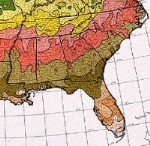
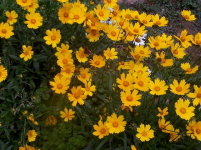 According to the USDA Plant Hardiness Zone Map Florida gardeners are growing in six zones. Like anywhere, depending on your location, you may be able to grow plants outside of their typical zones. That comes under the heading of ‘trial and error'. We may try but nature teaches us the error of our ways.
According to the USDA Plant Hardiness Zone Map Florida gardeners are growing in six zones. Like anywhere, depending on your location, you may be able to grow plants outside of their typical zones. That comes under the heading of ‘trial and error'. We may try but nature teaches us the error of our ways.
Following is a list of plants that are native to Florida. It is only a sampling of the native plants one can grow in the Sunshine State. You may want to do a more in-depth search to locate the perfect plants for your garden and zone.
The first list is perennials. Tried and true, perennials come back year after year without having to replant them. Given the right conditions and care, they will reward you every spring for many years to come.
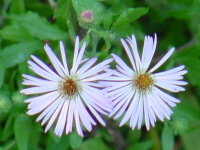 Perennials
Perennials
Plant
Uses
Growing Habits
Water, Light & Soil
Zone
Blazing star Liatris spicata
Nectar/Host
1 1/2-4ft
Grows wild in the sandy pine forests
of Florida.
Full sun
Moderate to dry
Does well in average garden soil.
Can survive
in sandy soil.
5-10
Reported to grow as far north as zone 3.
Climbing Aster Symphyotrichum carolinianum
Nectar/Host
Up to 12 ft
This is a vine but will simply trail along the ground
when there is nothing to climb up.
Sun/partial shade
Wet to dry soil
6-10
Dalea Dalea carthagenensis
NectarThis is a clover so it stays small. (Florida Prairie Clover)
Grows wild in the woods and fields.
Sun/Partial shadeAverage to dry
Average garden soil/Sandy
Grows in all of FL (except the Keys)
Florida Paintbrush Carphephorus corymbosus
Nectar/Host 12-36 inFull Sun
Average water tolerates dry soil
Likes good garden soil but does well
in sandy soil.
Florida phlox Phlox floridana
Nectar12-18 in
Phlox will cover a large area in just a few years. They are lovely as part of a meadow planting.
Sun/partial shade
Average water
Fertile, well-drained soil
5-10
Goldenrod Solidago
fistulosa
36-48 in.
Goldenrod grows in nearly any soil. It can be seen in all it's brilliance in the fall on roadsides & in fields all over the state.
An old folk tale is that when you see the goldenrod blooming, there are only six more weeks til winter.
Full Sun
Average water
Average/dry soil
5-11
Lobelia Lobelia
cardinalis
18-24in.
This flower can also be grown n a boggy spot in your garden.
Sun/partial shade
Any good moist garden soil.
3-10
Lyre-leaf sage Salvia lyrata
Nectar 12-18 in.Sun/partial shade
Average water
Needs good moist garden soil for best color.
5-10
Milkweed Asclepias feayi
Nectar/Host24-38 in.
This plant is host to the Monarch butterfly.
Sun.light shade.
Average water/dry.
Average to moist garden soil.
3-8
Mistflower Eupatorium coelestinum
Nectar/Host
1-2 ft
The mistflower doesn't like to dry out.
Sun/partial shade.
Slightly more than average water.
Any moist well-drained garden soil.
4-11
Passionflower Passiflora
Nectar/Host6-10 ft or moreSun/partial shade
Average water.
Average garden soil.
6-10
Pennyroyal Piloblephis rigida
Nectar 12-24 in.Full sun.
Average water/drought tolerant
Average to dry soil.
8-10Purple coneflower Echinacea purpurea
Host
24-30in.
*I found conflicting reports on this plant (it is a native or it isn't a native of florida)
Full sun light shade.
Average water is drought tolerant.
Well-drained soil.
4-9Purple top Verbena bonariensis
Nectar/Host
3-6 ft
Full sun/light shade.
Average/dry water
Average/dry good garden soil.
7-11
Sage Salvia azurea
Nectar 36-48 in.Full sun/ afternoon shade
Average but needs water during very dry spells
Well drained to dry soil.
4-9
Sea lavender Limonium carolinianum
Host 6-24 in.Full sun
Water regularly, soil should be kept moist.
Constantly moist soil
5-11
Southern sage Salvia riparia
Nectar24-36 in.
Can get as wide as it is tall.
It will have the look of a small shrub.
Light shade best.
Average water. Do not overwater. Sage don't like wet feet.
Good garden soil but will grow in poor soil.
8-10 (can be grown as an annual in other zones)
Stoke's aster Stokesia laevis
Nectar/Host12-18 in.
I have these planted in poor soil, rich soil, sun, light shade and full shade. They do equally as well in all situations in my yard.
Full sun but also does well in shade.
Average water.
Average to dry soil. Will grow in poor sandy soil.
5-10TampaVervain Glandularia tampensis
Nectar 12-18 in.
Sun/partial shade.
Average water.
Good well drained garden soil.
8-9
Tick-seed Coreopsis lanceolata
Nectar/Host12-18 in.Full sun.
Water regularly
Average moist soil.
4-9
Trailing phlox Phlox nivalis
Nectar4 in.
This is a mossy phlox It grows in mounds appr. 3' wide.
Full sun.
After established, water sparingly.
Hot, dry, well-drained garden soil.
5-9
Tropical sage Salvia coccinea
Nectar18-24 in.
This plant can tolerate dry conditions but if the dry spell is an extended one, you will need to give it a good drink now and then.
Sun/dappled shade.
Average water.
Good, well drained garden soil.
8-10
Reseeds annually in 6-8.
Wild petunia Ruellia caroliniensis
Host6-36 in.
This plant actually reached 5' in my garden.
Sun/partial shade.
Average water
Average, well
drained soil.
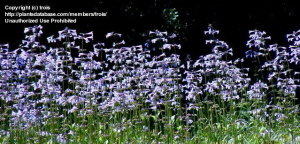
Flowering bushes are a favorite of all wildlife, including butterflies. Bushes not only add interest to the landscape. They also provide ample food and shelter for the visitors to your yard. Below is a short list of flowering bushes you may want to plant in order to draw these little darlings to your gardens.
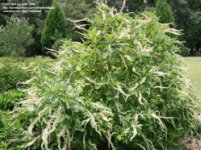 Bushes
Bushes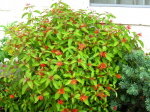
Plant
Uses
Growing Habits
Water,
Light &
Soil
Zone
Azalea Rhododendron canescens
NectarH 10-12 ft.
S 10-12 ft
*Native to North Florida
Sun to light shade.
Average water but do not let dry out.
Good garden soil. Likes to grow under pine trees.
6-9Firebush Hamelia patens
Nectar H 8-10 ftSun to light shade.
Average water.
Good garden soil.
8-11Golden dewdrop
Duranta repens
Sun to light shade.
Average water but do not let it dry out.
Good garden soil.
9-10 (could be perennial in 8 & 11 with right conditions)Crimson-eyed rose mallow
Hibiscus aculeatus
H 4 ft.
*fuzzy okra-like leaves & stems will irritate skin
Full sun.
Likes wet feet.
Bog garden type soils.
7-10Pineland lantana
Lantana depressa
H 6-12 in.
S 15-18 in.
Sun to light shade.
Average water.
Good garden soil.
Red Buckeye
Aesculus pavia
Sun to light shade.
Average water.
4-8
Sweet pepperbush
Clethra alnifolia
H 6-8 ft.
S 4-6 ft.
Sun to light shade.
Average water.
Good garden soil.
3-9Possum hawNectar/Host
H 6-10 ft.
S 6-12 ft.
Sun to light shade.
Average water.
Good garden soil.
5-9